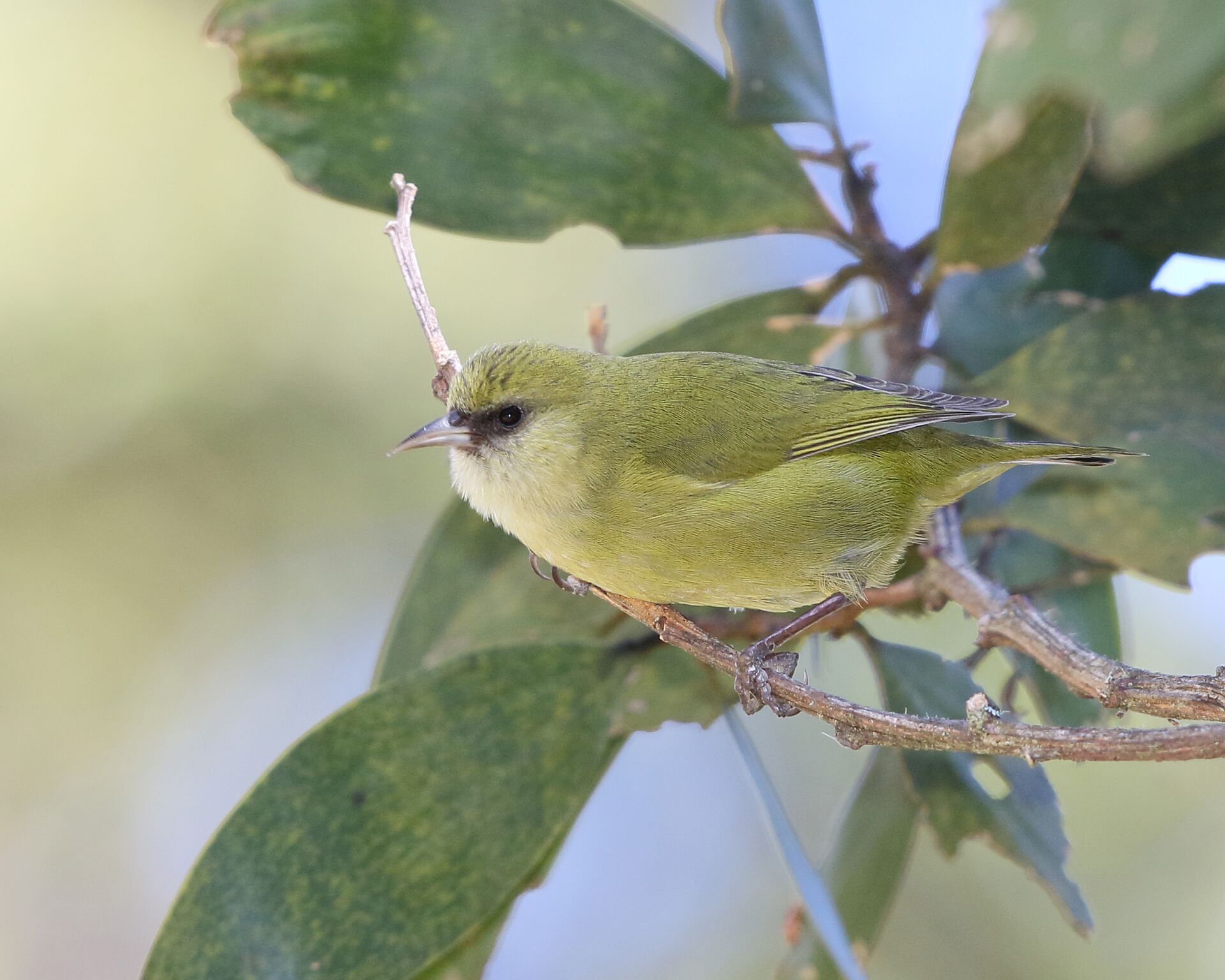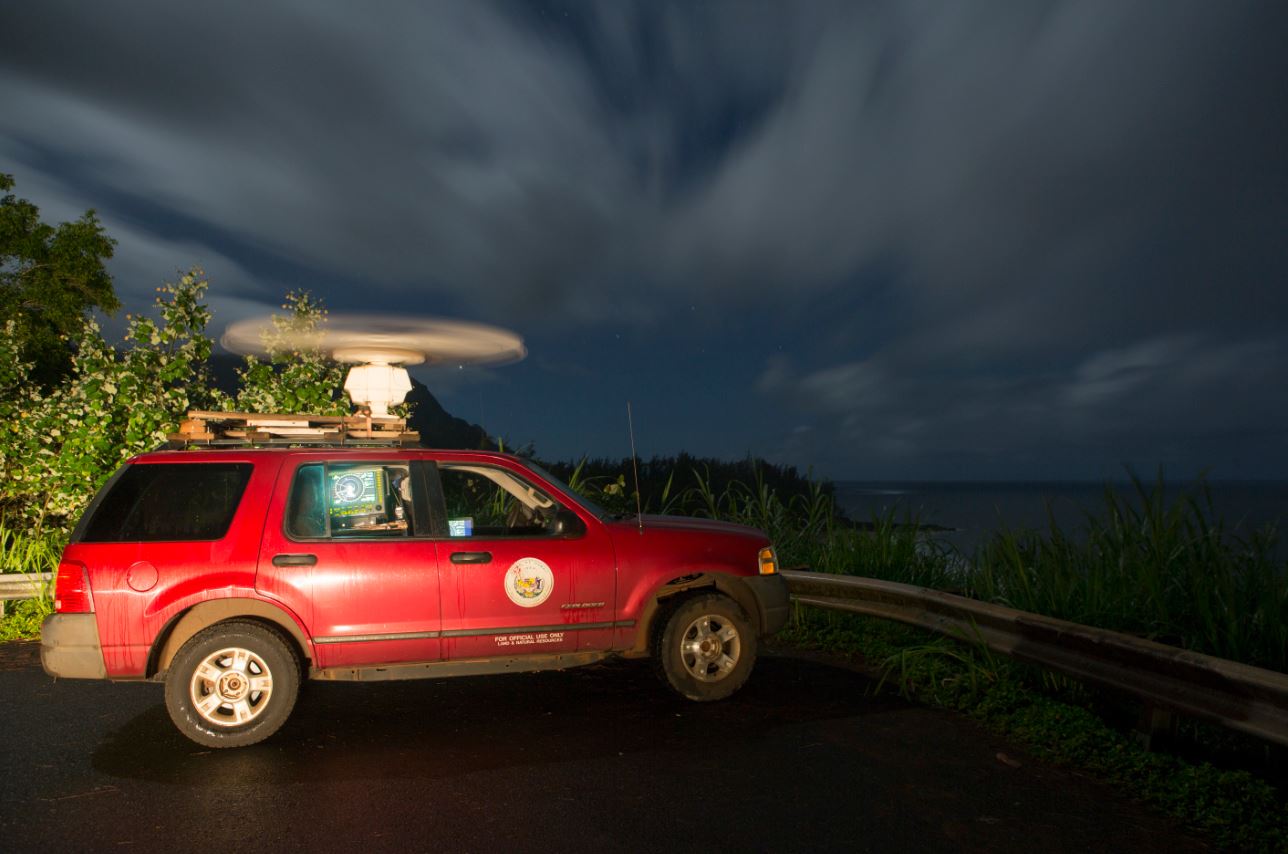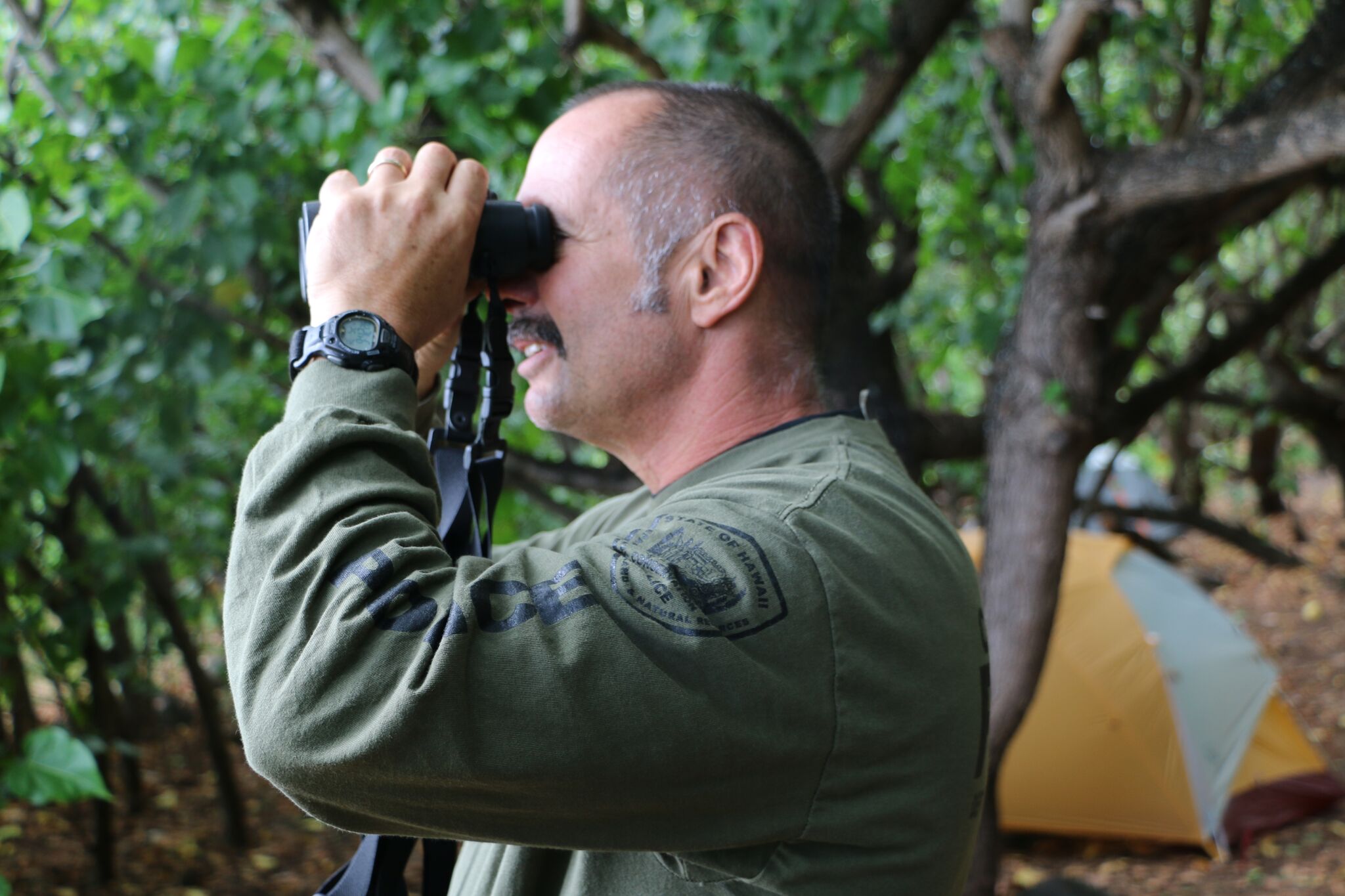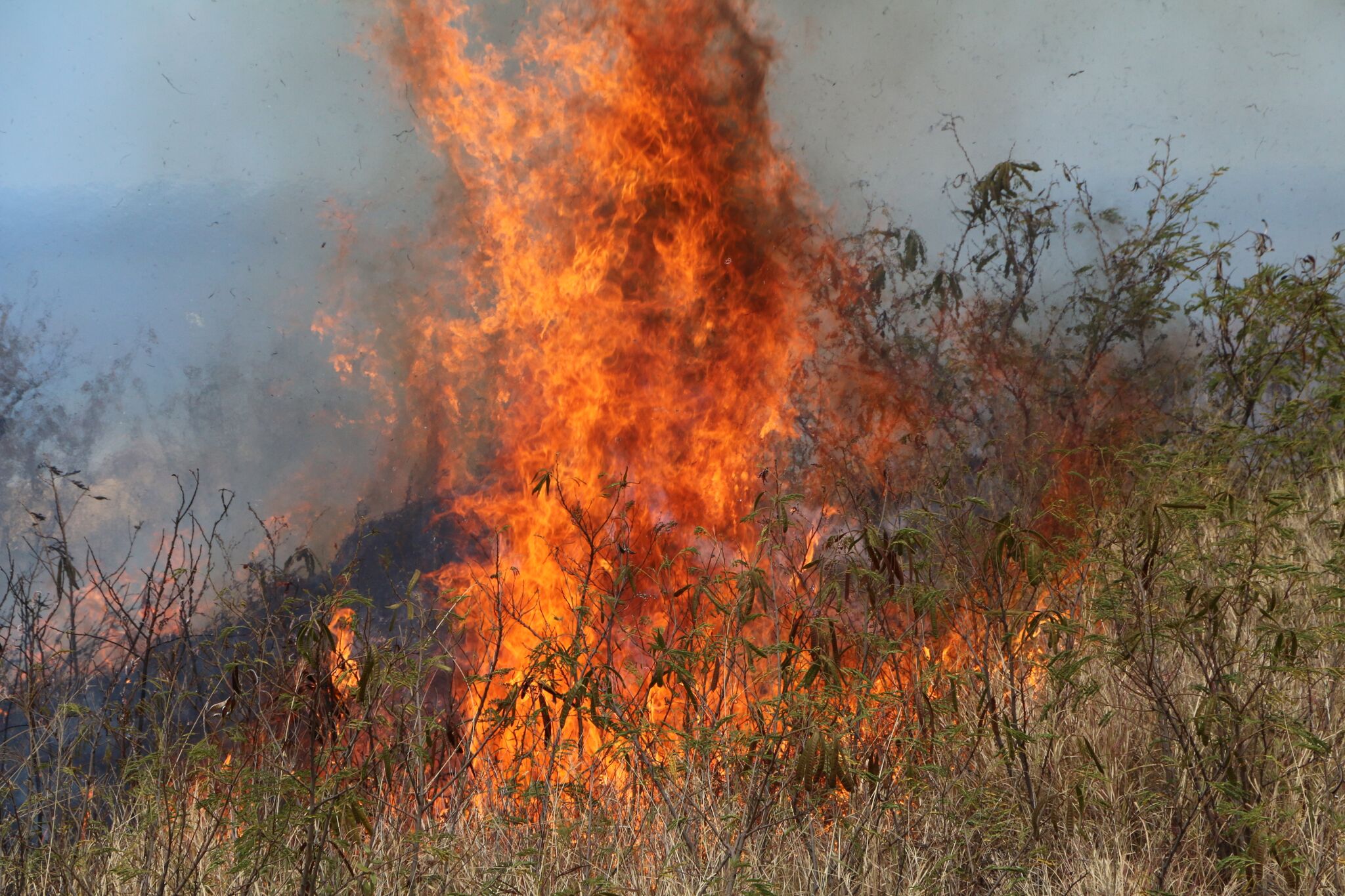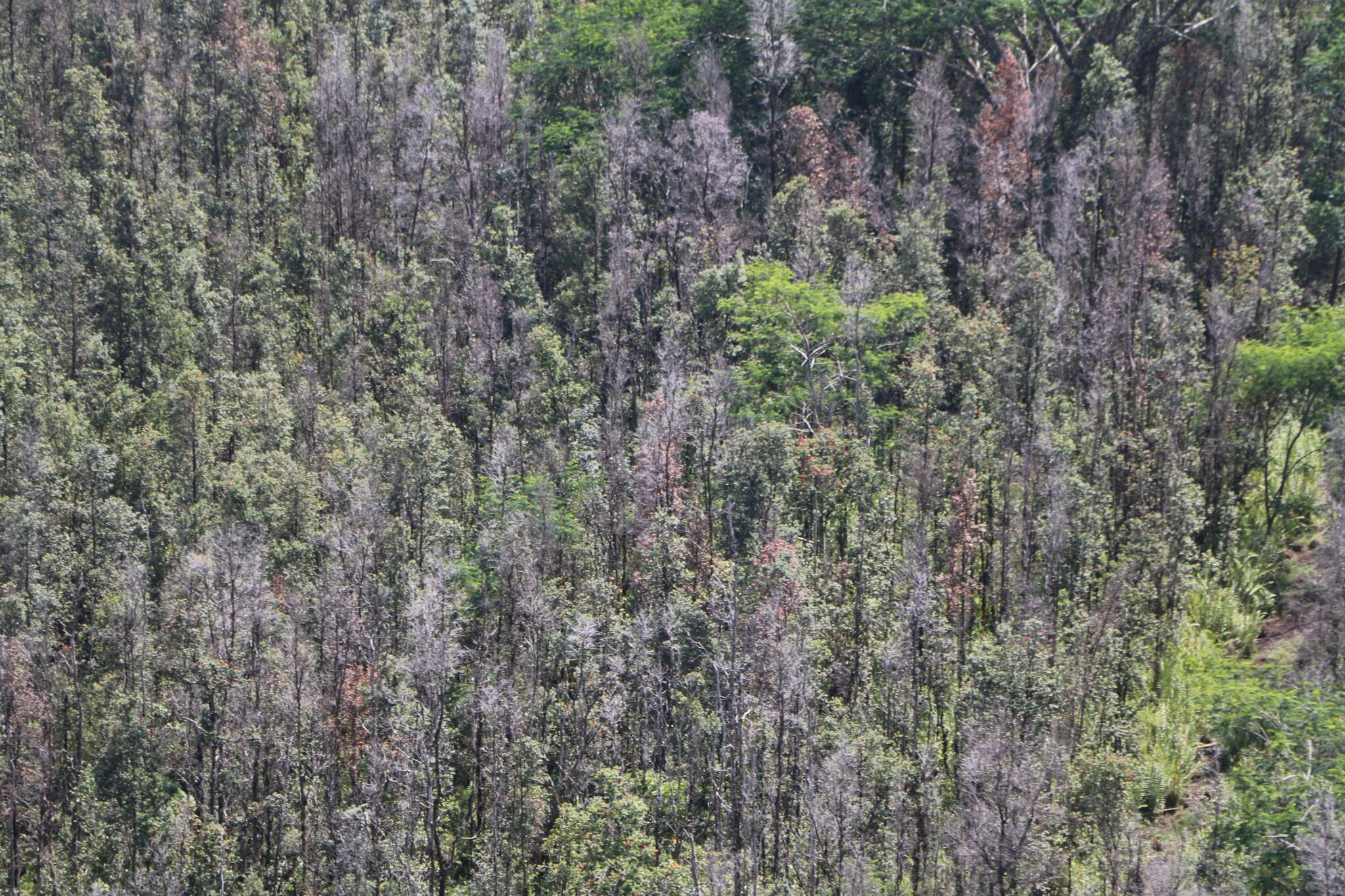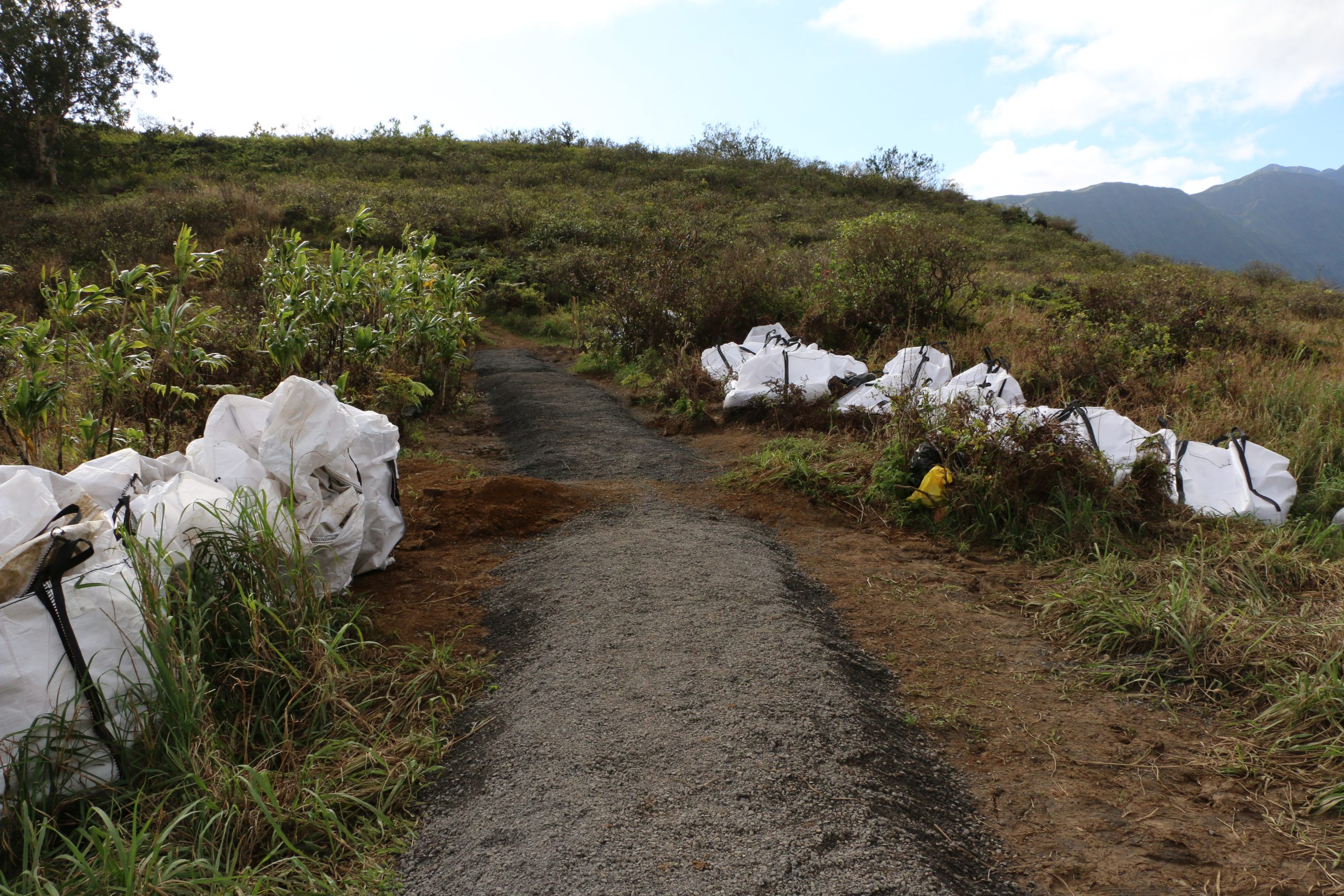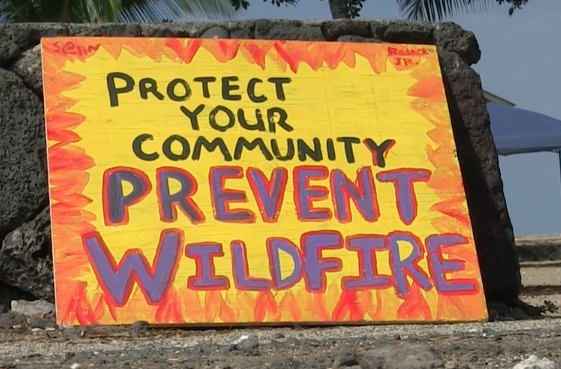Taking a cue from the successful impact of oysters on water quality in places like the East Coast’s Chesapeake Bay, the DLNR Division of Aquatic Resources (DAR) and Kualoa Ranch are conducting a study to see how oysters might positively impact the water of Oahu’s iconic Pearl Harbor.
slider
For more than 100 years there has been no known Hawaiian name for the endangered forest bird now commonly called the Hawaiʻi Creeper (Loxops mana). But Noah Gomes, a recent graduate of the University of Hawai‘i at Hilo with a masters degree in Hawaiian language and literature, recently put forth convincing evidence that he had rediscovered the true Hawaiian name for this species. Today, Hawaiian researchers, wildlife managers and elected representatives joined in a naming ceremony to honor this distinctive bird, in the Pu‘u Maka‘ala Natural Area Reserve (NAR) where the ‘Alawī resides.
An analysis of long-term radar studies on Kaua‘i has revealed massive declines in populations of the island’s two endangered seabirds, the Kauai Endangered Seabird Recovery Project (KESRP) announced today. The study, due to be published online in the scientific journal Condor on June 5th, shows that between 1993 and 2013 populations of the ‘A‘o (Newell’s Shearwater) declined by 94% and Ua‘u (Hawaiian Petrel) by 78%.
Work to restore the Nāpali Coast State Wilderness Park to its true wilderness character continued during a three-day law enforcement operation this week. A dozen officers from the DLNR Division of Conservation and Resources Enforcement (DOCARE) and the Dept. of Public Safety’s Sheriff Division arrested eleven people for being in a closed area without a permit in the Kalalau area of the park. A twenty-year-old man, who could not produce an identification, was handcuffed and flown out of the park and booked on charges at the Kaua‘i Police Department. So far in May, a total of 28 people have been arrested for failing to have the permit required for traveling past the two-mile marker on the famed Kalalau Trail. During law enforcement efforts over the past two years more than 200 people have been arrested.
State and county wildfire fighting crews today continued to work to establish a control perimeter around a fire that is burning between the 800 to 1,500-foot elevation at the western edge of Waimea Canyon, amid grassland and haole koa shrubs.
The most recent aerial surveys of ohia forests on O‘ahu, Maui, Kaua‘i, Hawai‘i, Moloka‘i,and Lāna‘i paint a good-news, bad-news picture. The good news is there are no confirmed cases of this fast-spreading fungal infection in ʻōhiʻa forests on any island other than the Big Island. The bad news is, the area of mortality thought to be caused by ROD has increased 50% on Hawai‘i island compared to DLNR’s previous survey in 2016.
Seventeen people were arrested at the Kalalau Section of the Napali Coast State Wilderness Park, during a pair of law enforcement sweeps earlier this week. Officers from the DLNR Division of Conservation and Resources Enforcement (DOCARE) arrested people without valid permits for being in a closed area. They believe among the 17, were three people who’d been illegally residing in Kalalau Valley for long periods of time.
(Kahului, Mau‘i) - On one side of the Waihe‘e Ridge Trail, hikers look deep into the Waihe‘e Gorge. On the other, they look across Makamakaole Gulch and out into the shimmering Pacific Ocean. On a clear day, yet another view is across the entire central plain of Maui all the way to the top of Haleakala. This challenging, but scenic trail is considered the most popular path on Mau‘i in the State’s Nā Ala Hele Trail and Access Program.
(Hilo)--The Department of Land and Natural Resources’ Division of Conservation and Resources Enforcement (DOCARE) is requesting the public's assistance in providing information related to a criminal investigation of Prohibited Activities in a Natural Area Reserve (NAR).
(Kailua-Kona) - Compared to large mainland wildfires, Hawai‘i’s are relatively small. Yet the percentage of land mass burned each year in the islands is equal to or exceeds the acreage burned in many western states.

